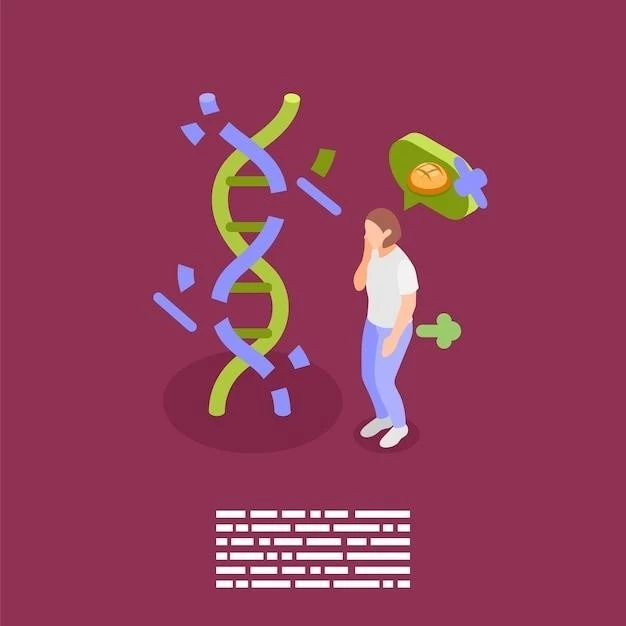Gaucher Disease Type 2
Understand the rare, fatal lysosomal storage disorder, Gaucher Disease Type 2. Seek genetic diagnosis early for infants with neurological symptoms. Focus on the brainstem, liver, and spleen. Research on enzyme replacement therapy vital for proper management.
Introduction to Gaucher Disease Type 2
Gaucher Disease Type 2 is a rare lysosomal storage disorder caused by a genetic mutation affecting the enzyme glucocerebrosidase. It is characterized by severe neurological symptoms in infants, leading to a fatal outcome. The disorder manifests as a neuronopathic form with profound involvement of visceral organs such as the brainstem, spleen, and liver.
For infants diagnosed with Gaucher Disease Type 2, early recognition and intervention are crucial. Genetic inheritance plays a key role in the development of this condition. Management involves specialized treatments focusing on enzyme replacement therapy to alleviate symptoms and improve quality of life. Research in this field is ongoing to enhance diagnosis and treatment approaches for this devastating disease.
Understanding the complexities of Gaucher Disease Type 2 is essential for healthcare professionals, families, and caregivers. By raising awareness about this rare disorder and emphasizing the importance of early diagnosis and holistic management, we can strive towards better outcomes and improved quality of life for affected individuals.
Understanding the Genetic Basis
At the core of Gaucher Disease Type 2 is a genetic mutation that affects the glucocerebrosidase enzyme. This mutation results in the inability of cells to break down a certain type of fat٫ leading to the accumulation of harmful substances in various tissues and organs. The inheritance pattern of this disorder is typically autosomal recessive.
Individuals with Gaucher Disease Type 2 inherit a mutated gene from both parents, leading to the manifestation of severe symptoms early in life. Understanding the genetic basis of this condition is crucial for accurate diagnosis and genetic counseling. Genetic testing plays a pivotal role in identifying carriers and at-risk individuals within families.
Genetic research continues to shed light on the mechanisms underlying Gaucher Disease Type 2, providing insights into potential treatment strategies and interventions. By unraveling the genetic complexities of this disorder, healthcare professionals can offer personalized care and tailored approaches to effectively manage the symptoms and complications associated with Gaucher Disease Type 2.
Symptoms and Diagnosis
Gaucher Disease Type 2 presents with a range of severe symptoms, including neurological manifestations such as poor muscle tone, seizures, exaggerated startle response, and developmental regression. Infants may also exhibit enlarged liver and spleen, respiratory issues, and abnormalities in eye movement.
Diagnosis of Gaucher Disease Type 2 involves a combination of clinical evaluation٫ genetic testing٫ and imaging studies. Healthcare providers rely on the presentation of symptoms٫ laboratory tests٫ and molecular analysis to confirm the presence of the disease. Early diagnosis is essential for timely intervention and management.
Given the progressive nature of Gaucher Disease Type 2 and its impact on the neurological system, prompt recognition of symptoms is vital. Regular monitoring and follow-up assessments are recommended to track disease progression and adjust treatment strategies accordingly. Collaborating with a multidisciplinary team experienced in lysosomal storage disorders can enhance the diagnostic process and improve outcomes for individuals affected by Gaucher Disease Type 2.
Neurological Manifestations
Gaucher Disease Type 2 is characterized by profound neurological manifestations that significantly impact the central nervous system. Infants with this condition may experience developmental regression, seizures, muscle stiffness, and difficulties with feeding and swallowing. The progressive nature of the disease can lead to severe neurological deterioration over time.
Neurological symptoms in Gaucher Disease Type 2 are a result of the accumulation of harmful substances in the brain٫ affecting neuronal function and communication. The brainstem٫ responsible for vital functions such as breathing and heart rate regulation٫ is particularly vulnerable in individuals with this disorder. As a result٫ affected individuals may require intensive neurological care and support.
Managing the neurological manifestations of Gaucher Disease Type 2 involves a multidisciplinary approach, including neurologists, geneticists, and pediatric specialists. Treatment strategies focus on addressing symptoms such as seizures, spasticity, and developmental delays. Close monitoring of neurological function and regular assessments are essential to optimize care and quality of life for individuals living with Gaucher Disease Type 2.
Involvement of Visceral Organs
Gaucher Disease Type 2 not only affects the neurological system but also leads to significant involvement of visceral organs such as the liver and spleen. Infants diagnosed with this condition may exhibit hepatosplenomegaly, where these organs become enlarged due to the storage of abnormal substances.
The accumulation of glycolipids in the liver and spleen can impair their normal functioning, leading to complications such as liver dysfunction and hypersplenism. Visceral manifestations in Gaucher Disease Type 2 can contribute to additional health challenges and impact overall well-being.
Managing the involvement of visceral organs in Gaucher Disease Type 2 requires a comprehensive treatment approach that addresses both neurological and organ-specific symptoms. Close monitoring of liver and spleen function, along with regular imaging studies, can help healthcare providers assess disease progression and tailor interventions accordingly. Collaborating with specialists in hepatology and gastroenterology is essential to ensure optimal care for individuals affected by the disease.
Management and Treatment Approaches
The management of Gaucher Disease Type 2 involves a multidisciplinary approach to address the complex needs of affected individuals. Treatment strategies focus on alleviating symptoms٫ improving quality of life٫ and slowing disease progression. Enzyme replacement therapy (ERT) is a cornerstone of management for Gaucher Disease Type 2٫ aiming to restore deficient glucocerebrosidase activity and reduce substrate accumulation.
In addition to ERT, supportive therapies such as physical and occupational therapy may help manage neurological symptoms and improve motor function. Nutritional support is crucial for individuals with Gaucher Disease Type 2, especially those with hepatosplenomegaly. Regular monitoring of liver and spleen function, along with hematological parameters, is essential to track disease progression and adjust treatment regimens as needed.
Genetic counseling plays a key role in guiding families affected by Gaucher Disease Type 2, providing information on inheritance patterns, family planning, and the availability of genetic testing. Psychological support and access to community resources can help individuals and families cope with the challenges associated with the disease.
Research and Developments
Ongoing research in the field of Gaucher Disease Type 2 continues to drive advancements in diagnosis, treatment, and disease management. The exploration of novel therapeutic approaches, such as substrate reduction therapy and gene therapy, holds promise for improving outcomes and addressing the unmet needs of affected individuals.
Emerging technologies, including precision medicine and gene editing techniques, have the potential to revolutionize the treatment landscape for Gaucher Disease Type 2. Collaborative efforts between researchers, healthcare providers, and pharmaceutical companies are essential to accelerate the development and accessibility of innovative therapies.
Clinical trials play a critical role in evaluating the safety and efficacy of new treatments for Gaucher Disease Type 2, offering hope for enhanced quality of life and prolonged survival for affected individuals. Stay informed about research initiatives, participate in clinical studies if eligible, and advocate for continued investment in rare disease research to drive progress in the field.
Unique Challenges in Infants
Infants with Gaucher Disease Type 2 face distinct challenges due to the early onset and rapid progression of the condition. The severe neurological and visceral manifestations present in infancy require specialized care and interventions tailored to the needs of this vulnerable population.
Managing Gaucher Disease Type 2 in infants involves close monitoring of developmental milestones٫ neurological function٫ and organ involvement. Early recognition of symptoms٫ prompt diagnosis٫ and initiation of appropriate therapies are crucial to optimize outcomes and quality of life. Collaborating with a pediatric team experienced in lysosomal storage disorders can provide comprehensive care and support for infants with Gaucher Disease Type 2.
Supporting families and caregivers through the unique challenges associated with caring for an infant with Gaucher Disease Type 2 is essential. Accessing resources٫ educational materials٫ and community support networks can help navigate the complexities of the condition and ensure that the infant receives the best possible care and attention.
Importance of Early Diagnosis
Early diagnosis of Gaucher Disease Type 2 is paramount in improving outcomes and quality of life for affected individuals. Recognizing the signs and symptoms of the condition in infancy enables healthcare providers to initiate timely intervention and disease management strategies.
Diagnostic advancements, including genetic testing and imaging modalities, have enhanced the ability to identify Gaucher Disease Type 2 early in its course. Early intervention with appropriate therapies such as enzyme replacement therapy can help alleviate symptoms, slow disease progression, and improve overall prognosis.
Educating healthcare professionals, families, and caregivers about the importance of early diagnosis is crucial in ensuring prompt recognition and treatment of Gaucher Disease Type 2. By advocating for timely screening and genetic testing for at-risk populations, we can enhance awareness, promote early intervention, and ultimately improve the long-term outcomes for individuals living with this rare disorder.
Holistic Management Approach
Implementing a holistic management approach is essential for individuals living with Gaucher Disease Type 2. This comprehensive strategy involves addressing not only the physical symptoms and medical needs but also the emotional٫ social٫ and psychological aspects of the condition.
Collaborating with a multidisciplinary healthcare team comprising specialists in genetics, neurology, hepatology, and other relevant fields is key to providing holistic care for individuals with Gaucher Disease Type 2. Tailoring treatment plans to address the unique needs of each individual can help optimize outcomes and enhance quality of life.
Supporting the well-being of individuals with Gaucher Disease Type 2 goes beyond medical interventions. Providing access to support groups٫ mental health services٫ and community resources can help individuals and families cope with the challenges associated with the condition. Encouraging a healthy lifestyle٫ proper nutrition٫ and regular physical activity can also contribute to overall well-being and symptom management.

Conclusion
In conclusion, Gaucher Disease Type 2 is a rare and devastating lysosomal storage disorder characterized by severe neurological manifestations and visceral organ involvement. Early recognition, genetic diagnosis, and prompt intervention are crucial in managing this condition effectively.
Advancements in research and therapeutic developments offer hope for improved treatments and outcomes for individuals living with Gaucher Disease Type 2. Embracing a holistic approach to care٫ focusing on multidisciplinary collaboration٫ and supporting affected individuals and families through education and resources are vital components in navigating the complexities of this rare disorder.
By raising awareness, advocating for early diagnosis, and promoting ongoing research efforts, we can strive towards enhancing the quality of life and well-being of those impacted by Gaucher Disease Type 2. Together, we can work towards a future where better treatment options and support systems are available for individuals facing this challenging condition.
